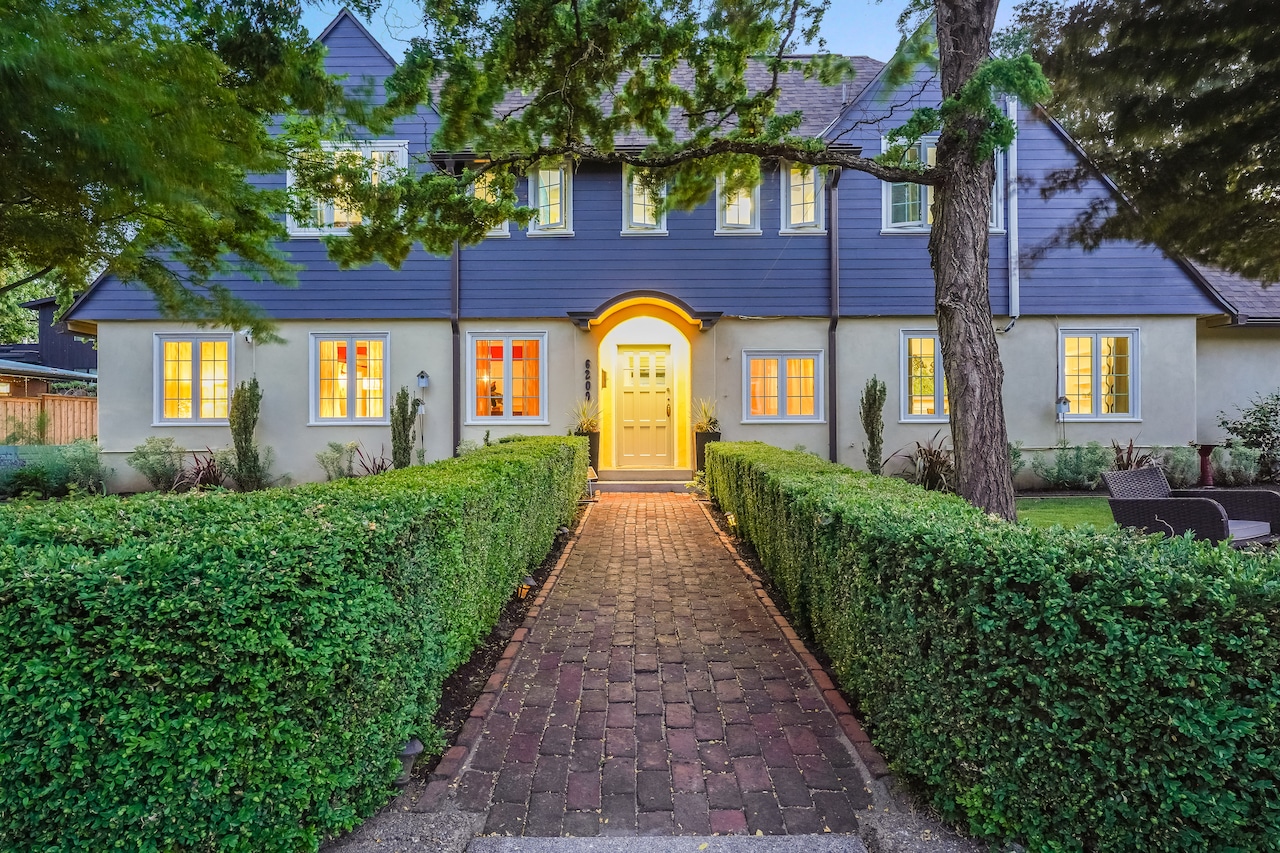
The 1912 English Arts & Crafts house in Southeast Portland that served as the Portland Arts Retreat has a new chapter: The handsome, pitched-roof manor sold Sept. 3 for $1.3 million.
The sale is only the third time in 113 years that the architecturally significant residence, on an expansive bluff lot overlooking the Willamette River in the Sellwood-Moreland neighborhood, has changed hands.
The classic English-style house was originally designed by celebrated architect Wade Pipes for his brother.
For decades, the house was a haven for artists and thinkers, as supported by the longtime property owners, Richard Sikora, an ethics professor at the University of British Columbia, and his wife, visual artist Dorothy.
The couple, who purchased the 0.26-acre property in 2007, hosted prominent philosophers Derek Parfit, Paul Edwards, A.J. Eyre, and Peter Singer, a major figure in the animal rights movement.
The Sikoras’ daughter Anne carried on their legacy by carefully restoring the home and establishing the Portland Arts Retreat. Guests have included photographer Janelle Lynch, who is exhibiting in New York and London, and Pulitzer Prize-winning writer Nam Le, among others.
The property on Southeast 13th Avenue was placed on the market June 6 at $1.6 million.
More than 40 groups of home shoppers attended the open house or private showings, said listing broker Yvonne Blewett of Cascade Hasson Sotheby’s International Realty.
Blewett told The Oregonian/OregonLive she met home shoppers “who cherish artistry over trend, history over hurry, and the timeless craftsmanship that turns a house into a living legacy.”
On July 14, the price dropped to $1,490,000, and an offer was accepted six days later.
Writers completed their retreat at the end of August, a shipping company packed up sentimental furniture and paintings to send to the Sikora family, and the rest of the furnishings were sold at an estate sale organized by Kristen Hudson of Family Affair.
Blewett’s story of connecting with seller Anne Sikora is interesting.
Last year, Blewett was a part of a domino of three transactions from Hawaii to Bend to Portland. This year, Sikora, the buyer of the Hawaii property, was ready to sell her family home in Portland, known as the Professor’s Daughter’s House.
“And the full circle came back to me to do the fourth chapter,” said Blewett. But there were twists and turns along the way.
Sikora interviewed seven agents and most advised her to paint over bold colors in the house — burnt red trim in the living room, sage walls in the sunroom and butter yellow in some of the four bedrooms — to create a blank canvas.
In contrast, Blewett embraced the home’s strong artistic spirit. She suggested softened colors without erasing character. She partnered with Hudson’s staging company to incorporate the seller’s furniture, and “presented buyers with a clear plan for updates that honored the home’s 1912 charm,” said Blewett.
That strategy paid off, said Blewett. An offer for the home was accepted 43 days later.
Tage Packebush, also of Cascade Hasson Sotheby’s International Realty, represented the buyers, a Portland family.
History of the house
If you wander around Portland’s century-old neighborhoods, you will spot English Arts and Crafts houses, a style popularized here by Wade Hampton Pipes and others.
The British launched the Arts and Crafts movement that celebrated craftsmanship and locally made materials in the late 19th century. It was then readily adapted to American tastes, especially by Oregon-born Pipes, who studied at the Central School of Arts and Crafts in London, England, from 1906 to 1911.
Over his 50-year career, Pipes designed 70 residences, from quaint English beach cottages to large Pacific Northwest houses with glass walls. At least 15 of his residences are listed on the National Register of Historic Places.
Renowned Pacific Northwest regional modern architect Pietro Belluschi praised Pipes’ skill as a craftsman and designer who understood good composition and fine detailing.
“Wade Pipes was a man out of time: a free spirit living an uneasy truce with a technologically obsessed society,” observed Belluschi. “He was uncompromising in his principles and adamant in what he thought to be appropriate and beautiful.”
In 1911, the 33-year-old Pipes returned to Oregon from England and founded his Portland architecture firm. His first design was a house for his brother, attorney John Pipes, and John’s wife, violinist Susie Fennel Pipes, a member of the Portland Chamber Music trio.
In this house, completed in 1912, Pipes’ characteristic style was well defined and his career firmly launched, according to experts with the National Register of Historic Places writing about Pipe’s 1926 Elizabeth Ducey House.
Historians said each Wade Pipes house was a unique design in which he “synthesized the comfort and beauty of the English country house with its site and his client’s needs into a house which was his own special creation.”
The 1912 English Arts & Crafts house, adjacent to the Oak Bottom Wildlife Refuge on the east bank of the Willamette River, has intricate woodwork, leaded glass and other Arts and Crafts features have been preserved. The kitchen and bathrooms were updated in the popular style that celebrates handmade craftsmanship, functional simplicity and harmony with the environment.
A standalone second home with a private porch that can be used for multigenerational living or as a creative studio is also part of the property.
The residences have a total of 3,332 square feet of living space and are surrounded by landscaped grounds that include raised garden beds, a Japanese-style garden and a saltwater hot tub under old-growth trees.
The Staats family were the owners from 1954 until 2007 when the Sikoras purchased the property and kept it for 18 years.



